Download Travellers’ information ENGLISH.
Download Información al Viajero Español.
Switch to Portuguese language setting for information in Portuguese.
🙏🏻🙏🏻🙏🏻
Thanks to its versatile natural, cultural and geographical attributes, Nepal offers everything to everyone. We have something special to serve for adventure seekers, nature lovers,connoisseurs of rich aesthetic treasures and all others. 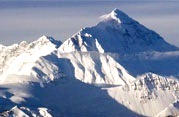
Nepal is an ideal destination for adventure tourism because of its variegated, often formidable geography, inherently replete with rich, refreshing nature. Once in Nepal, one can enjoy a number of outdoor activities from Paragliding near the mountains to spotting the Bengal tigers in the dense forest of Chitwan. Being gifted with 8 of the 14 highest peaks in the world, including Mt. Everest, Nepal is the well-known hub of mountaineering. Trekking, Rafting, Jungle Safari, Exploration of Flora and Fauna, Mountain Biking, Bungee Jumping, Bird Watching, Canoeing, Rock Climbing, Mountain Flight, Horseback Riding, Fishing, Honey Hunting are major choices of adventure tourism. The latest concept of Everest Marathon is unique of its kind. Elephant Polo Competition held every year in Nepal is another unmatched niche of adventure in Nepal.
For ages, the Nepalese Himalayas have provided a serene and sacred place to all. Sages and seers have made them home in their quest of deliverance from suffering and ignorance. The same Himalayas now serve as attractive destination for adventure tourists from around the world.
Good news for nature lovers, Nepal is also a home to a wide variety of flora and fauna in various
Visitors may opt to go for jungle safaris or may stay at some of the finest wildlife resorts to experience the wildlife of Nepal. The Chitwan National Park alone has nearly 50 different varieties of mammals and 450 species of birds. Located above 9000 feet, the Sagarmatha National Park,which is acknowledged by UNESCO as world heritage site, as property for conservation. the highest wildlife reserve in the world offers eye catching view of snow pecked peaks.
Besides, Nepal is a land of artistic pioneering. Major artisan products of Nepal include silver jewelry, figurines and statues, musical instruments, thankas and other paintings, masks and puppets, paper products, pashmina and silk products and hand-loomed garments.
Nepal is a multi-ethnic, multi-cultural, multi-religious and multi-lingual nation.
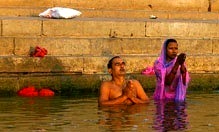
Unity in pluralism and diversity are its unique and notable features. As a showcase of the magnificent diversity of Nepal’s cultural forms, the Ethnic Museum is a living resource center to know and learn about the structure of Nepalese society.
Visitors can also obtain quality medical services in affordable prices, staying in the proximity of untainted virginity of nature. Nepal offers economic and affordable medical treatment by qualified and efficient English speaking medical personnel. Homopathy is also popular way of treatment in Nepal. The country is also known for excellent naturopathy services.Natural methods include exercise, yoga, reki, spiritual meditation, physiotherapy and other ways of treatment, which have been proved effective in and outside the country.
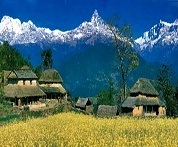
A country where a vast majority of people live in rural areas, Nepal attaches huge importance on rural tourism. This new genre of tourism entails a possibility to get acquainted with the main treasures of the country: culture, customs and traditions. Rural tourism allows visitors to get acquainted with the everyday life and culture of the local residents. They will be able not only to watch sidewise the life in the village, but also to participate directly in it.
Popular Cities

The capital city, Kathmandu is said once enriched with temples more than homes and festivals exceeding the number of days in a year. The whole valley with its seven heritage sites has been enlisted in cultural World Heritage Site list. The place, which blends cultural vigor with modern facilities possible on earth is place liked by tourists been here. The place has more to offer and it is not only administrative capital of the country but to the fullest extend capital of traditional culture and physical resources. Three Durbar Squares – Kathmandu, Patan and Bhaktapur, Pashupatinath, Bouddhanath, Swoyambhunath and Changunarayan are the places most revered by the Kathmandu ties and whole world.
Kathmandu is a fascinating old city today where pagodas, typical temples, narrow cobbled lanes, old carved windows, and stone shrines are backdrops to the drama of life that continues unhindered. Here the experiences are amazing, views fascinating, and the climate charming. There are living Goddesses whose smiles are a benediction. There are reincarnate Lamas who foresee the future with a roll of dice and scriptural reference. There are walks that lead the adventurous to legendary places where ogres once lived. There are hidden gardens behind palaces yet unseen and courtyards where miracles happen, and a city the Buddha visited.
The natural beauty of Pokhara in Midwestern Nepal is simply bewildering. Forming the backdrop are the spectacular Annapurna Mountains with the magnificent fish-tailed Machhapuchhre dominating the scene. Adding to Pokhara’s enchantment are the three serene lakes of Phewa, Rupa and Begnas. Lumbini, in the southwest, is the birthplace of Lord Buddha and a World Heritage Site. An inscription on the Ashoka Pillar identifies the Sacred Garden as the place where the Buddha was born. Lumbini has a number of artistic temples and monasteries built through international support.
UNESCO recalls Chitwan as one of the few remaining undisturbed vestiges of the ‘Terai’ region, which formerly extended over the foothills of India and Nepal at the foot of the Himalayas. The Chitwan National Park has been enlisted in natural World Heritage Site. It has a particularly rich flora and fauna. One of the last populations of single-horned Asiatic rhinoceros lives in the park, which is also one of the last refuges of the Bengal tiger.
Parks and Reserves

There are a total of 9 national parks, 3 wildlife reserves, 6 conservation areas, 1 hunting reserve including 11 buffer zone areas in and around protected areas, covering a total of 28,998.67 sq km.(19.70%) of the country’s total land. Nepal’s rich bio-diversity renders it ideal as an eco-tourism destination.
| 9 National Parks | Bardia, Chitwan, Khaptad, Langtang, Makalu Barun, Rara,Sagarmatha, Shey- Phoksundo, Shivpuri Nagarjun. |
| 3 Wildlife Reserves | Koshitappu, Parsa, Shuklaphanta |
| 1 Hunting Reserve | Dhorpatan |
| 6 Conservation Area | Annapurna, Kanchenjunga, Manaslu, Api Nampa, Blackbuck, Gaurishankar |
Nepal where major chunk of area is occupied by villages has tremendous potential in rural tourism. Its main aim is to link village development and sustainable tourism through the generation of income, employment and local markets for agricultural products and handicrafts. Other objectives include the provision of incentives for forestation and nature conservation and the creation of a global family through the encounter between rural Nepalese people and foreign tourists during village home stays, resulting in mutual understanding and learning. Accommodation is in individual guestrooms with host families or, in between villages, in tents. During the trekking, meals are prepared by a professional team. In the villages, the visitors can try a delicious, hygienically prepared Nepali “Daalbhaat” consisting of locally produced rice, lentils and garden-fresh, organically grown vegetables.
Hill Stations

Notable among hill stations include: Bandipur, Nagarkot, Dhulikhel, Tansen, Gorkha amongst others. Bandipur is an ancient trading town of quaint streets and charming atmosphere, which lies 135 km out on the Kathmandu -Pokhara highway. Bandipur retains its age-old cultural attributes. Nagarkot, located 32 kilometers east of Kathmandu, is one of the most scenic spots in Bhaktapur district and is renowned for its spectacular sunrise view of the Himalaya when the weather is clear. Nagarkot has become famous as one of the best spots to view Mount Everest as well as other snow-topped peaks of the Himalayan range of eastern Nepal. Dhulikhel is a scenic and ancient town situated 30 kilometers east of Kathmandu on the Arniko Rajmarg (Kathmandu Kodari Highway). From here one has a panoramic view of the Himalayan range. Tansen is on the way from Pokhara to Lumbini, the birthplace of Lord Buddha, and it is not too far from the Chitwan National Park and located around 1,300 meters above sea level, on the south flank of Srinagar Hill. Gorkha is a scenic hill- town with great historical significance. King Prithvi Narayan Shah, who unified the Nepal during eighteenth century, was born in the township of Gorkha. It offers panoramic view of snow-fed mountains.
UNESCO Heritage Sites

Of the 812 World Heritage Site, four are located in Nepal, namely the Kathmandu Valley, Sagarmatha National Park, Chitwan National Park and Lumbini, birthplace of Lord Buddha. Major monument zones in the Kathmandu Valley are Swoyambhunath, Boudhanath, Bhaktapur Durbar Square, Changunarayan, Pashupatinath, Kathmandu Durbar Square, Patan Durbar Square.
Plains (Tarai)

Janakpur
Janakpur in the eastern tarai is one of the historic cities of Nepal and lies 20 km south of the (East-West Highway) Mahendra Highway. Previously renowned as Mithila, it was the capital of the Videha (bodyless) spiritual rulers, the Janakas. Janaki or Sita was born to Sivadhwaga Janaka and was married to Rama, the King of Ayodhya and legendary hero of the great epic ‘Ramayana’. A famous center of learning in ancient times, Mithila once boasted hundreds of sages who contributed substantially to Hindu philosophy.
Janakpur’s landmark is no doubt the popular Janaki Temple in the middle of the bazaar which is dedicated to Sita.
Pilgrimage sites
Nepal has several ancient pilgrimage sites. Each temple is attached to a legend or belief that glorifies the miraculous powers of its deity. Kathmandu Valley is home to the famous Pashupatinath Temple, Swayambhu Stupa and several other famous temples. Hundreds of famous temples are located in and around the Kathmandu Valley. Some well-known pilgramage sites are: Baraha Chhetra, Halesi Mahadev, Janakpur, Pathibhara, Tengboche in East Nepal; Manakamana(need to go by cable car ride), Gorkha, Lumbini, Muktinath, Gosainkunda, Tansen, Kathmandu Valley in Central Nepal; and Swargadwari, Khaptad Ashram in West Nepal. Pashupatinath, Swoyambhunath, and Boudhanath are the sites that are also listed in the UNESCO Heritage Sites.
Nepal is also the Gateway to Kailash Mansarovar, the mythical abode of Lord Shiva. Devotees from various parts of Nepal and India throng the temples during special festivals. Pilgrimage sites of Nepal like Muktinath and Gosainkunda make popular trekking destinations. Tours to these sites are encouraged for the novelty they provide in terms of nature and culture.
Pashupatinath, dedicated to Lord Shiva, is the holiest Hindu destination in Nepal.
Swoyambhunath is believed to have been established more than 2,500 years ago.
Janaki Temple dedicated to Janaki (Sita in Ramayana).
New Tourism Destination

Langtang ,Dolpa, Lumbini
Main Things to do in Nepal:
Mountaineering:

Nepal first came into world focus when Tenzing Norgay Sherpa of Nepal and Sir Edmund Hillary of New Zealand conquered Mt. Everest in 1953. Ever since, there have been countless expeditions heading off to the Himalayas. With eight of world’s highest peaks within Nepal’s boundaries, there is tremendous interest in the Nepal Himalaya. There are some 326 peaks in Nepal open for mountaineering. Climbing gear and equipment can be bought or rented in Kathmandu or the whole expedition can be handled by mountaineering and trekking agencies. All logistics are taken care of by these agencies including gear, food, transportation, guide and porter services. They also arrange for insurance coverage. Always choose an agency that has a good track record.
Trekking:

Trekking is by far Nepal’s biggest attraction. A trek is also the best means of seeing the country and to understand its people. Walking through emerald rice fields; through rhododendron forests; crossing streams, camping out on a hilltop in the wilderness with towering mountains in the background, make trekking an unforgettable experience. One can also do pony treks in some remote places, which is equally enthralling for visitors. Pony treks are offered mostly in western region of Pokhara, Dolpo and Lo Manthang (Mustang). The two most popular treks are the Everest Base Camp Trek and the Around Annapurna also known as the Annapurna Circuit as it goes right around the Annapurna range. There are many different treks offered in the Everest and Annapurna regions. Other popular regions are the Langtang valley, Helambu, Makalu, Manaslu, Kanchenjunga and the Arun Valley. Another popular destination in the Everest region is the Gokyo valley.
Rafting:

Nepal has some of the best rivers for rafting. Rafting trips for some is the highlight of their stay in Nepal. The waters in Nepal offer something for everybody: Grade 5-5+ rivers with raging white water rapids for the adventurous, to Grade 2-3 rivers with a few rapids for novices. Rafters also have a choice ranging from two to three day trips to trips of two or three weeks. Paddling is a fun way to enjoy the trip as well as bonding with fellow rafters. The river guide begins with instructions on safety and emergencies before everyone is given life vests and helmets. This is a must for safety on the river at all times. Lunch on some white sandy beach around mid-day is fun. The best time for rafting is from October through mid-December and March to early May.
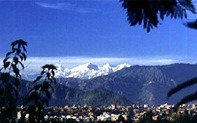 Sight Seeing It is one of the major attractions of Nepal. In Nepal, one can visit the places of historical, cultural and religious importance and enjoy the scenic beauty at the same time. Famous destinations for sight seeing are Kathmandu valley, Pokhara (with scenic beauty), Lumbini (birthplace of lord Buddha), Nagarkot and Dhulikhel (hill resorts), Gorkha, Janakpur etc. Sight Seeing It is one of the major attractions of Nepal. In Nepal, one can visit the places of historical, cultural and religious importance and enjoy the scenic beauty at the same time. Famous destinations for sight seeing are Kathmandu valley, Pokhara (with scenic beauty), Lumbini (birthplace of lord Buddha), Nagarkot and Dhulikhel (hill resorts), Gorkha, Janakpur etc. |
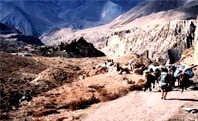 Trekking Nepal’s mountainous and hilly regions offer some of the most spectacular trekking sites in the world. The immense contrasts in altitude and climate found in the different parts of the country support an equally spectacular mix of life styles, vegetation types and wildlife. The most popular trekking destination in Nepal is the Annapurna region. Other destinations include Everest region, Langtang region and other remote areas. Trekking Nepal’s mountainous and hilly regions offer some of the most spectacular trekking sites in the world. The immense contrasts in altitude and climate found in the different parts of the country support an equally spectacular mix of life styles, vegetation types and wildlife. The most popular trekking destination in Nepal is the Annapurna region. Other destinations include Everest region, Langtang region and other remote areas. |
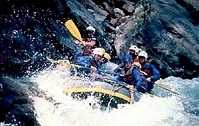 Mountaineering Nepal is well known for its Himalayan Mountains. Among the ten highest peaks in the world, eight are in Nepal, including the highest peak Mr. Everest. Nepal is a famous destination for mountaineers and every year more than 100 expeditions trudge up the Himalayas. There are four seasons for mountaineering in Nepal: Mountaineering Nepal is well known for its Himalayan Mountains. Among the ten highest peaks in the world, eight are in Nepal, including the highest peak Mr. Everest. Nepal is a famous destination for mountaineers and every year more than 100 expeditions trudge up the Himalayas. There are four seasons for mountaineering in Nepal:
|
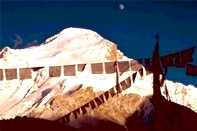 White Water River Rafting: Nepal has earned a reputation as one of the best destinations in the world for white water rafting. For the rafting purpose, rivers are graded on a scale of one to six depending on how wild they are. Four grades are considered to be quite challenging without being exceedingly dangerous to the novice rafter. Grade five requires some previous river experiences. White Water River Rafting: Nepal has earned a reputation as one of the best destinations in the world for white water rafting. For the rafting purpose, rivers are graded on a scale of one to six depending on how wild they are. Four grades are considered to be quite challenging without being exceedingly dangerous to the novice rafter. Grade five requires some previous river experiences. |
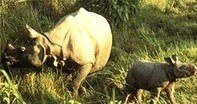 Jungle Safari: Nepal offers some of the most exciting safari destinations in the world. There are 14 national parks and wildlife reserves in the country. They offer one of the world’s major habitats for endangered species like the one-horned rhino, Royal Bengal tiger, snow leopard, blue bull, and the long stouted fish eating gharial crocodile. Jungle Safari: Nepal offers some of the most exciting safari destinations in the world. There are 14 national parks and wildlife reserves in the country. They offer one of the world’s major habitats for endangered species like the one-horned rhino, Royal Bengal tiger, snow leopard, blue bull, and the long stouted fish eating gharial crocodile. |
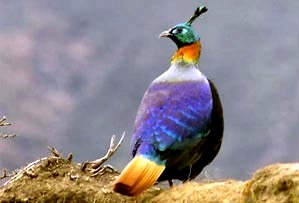 Bird Watching: Bird Watching is another interesting event in Nepal. Over 800 species of wet land, migratory and resident birds are found in Nepal. They include koklas, giant hornbills, red-headed trogons, paradise flycatchers, herons, kingfishers, Tibetan snow rocks, and many species of pheasants, ogrets warblers and babblers. The popular bird watching spots are Phulchoki, Godavari, Shivapuri, and different national parks like Chitwan. Bird Watching: Bird Watching is another interesting event in Nepal. Over 800 species of wet land, migratory and resident birds are found in Nepal. They include koklas, giant hornbills, red-headed trogons, paradise flycatchers, herons, kingfishers, Tibetan snow rocks, and many species of pheasants, ogrets warblers and babblers. The popular bird watching spots are Phulchoki, Godavari, Shivapuri, and different national parks like Chitwan. |
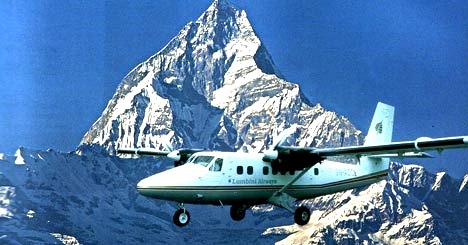 Mountain Flight: The mountain flight is one of the popular attractions in Nepal. For those who are restricted by time or other reasons from going to trekking offer a panoramic view of the Himalayas in just one hour. Even those visitors who like the rigors of trekking still usually do not miss this opportunity to have a different perspective of the landscape. The plane departs from Kathmandu and flies alongside the Himalayas giving the opportunity to view the snow peaks at a close range. During the flight travellers will be able to view various mountains including Mt. Everest. Mountain Flight: The mountain flight is one of the popular attractions in Nepal. For those who are restricted by time or other reasons from going to trekking offer a panoramic view of the Himalayas in just one hour. Even those visitors who like the rigors of trekking still usually do not miss this opportunity to have a different perspective of the landscape. The plane departs from Kathmandu and flies alongside the Himalayas giving the opportunity to view the snow peaks at a close range. During the flight travellers will be able to view various mountains including Mt. Everest. |
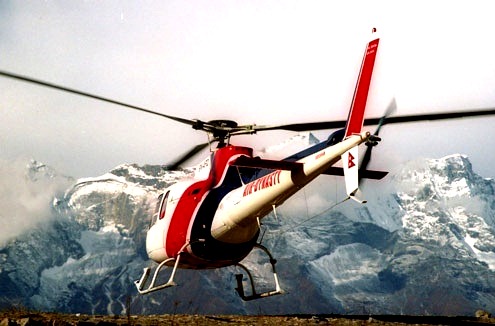 Sight Seeing by Helicopter: In Nepal, going to remote corners of the Himalayas by Helicopter is a pleasant and exciting activity. Since the helicopter needs very small place for landing, it can be hired to take tourists to any destination at any time. Sight Seeing by Helicopter: In Nepal, going to remote corners of the Himalayas by Helicopter is a pleasant and exciting activity. Since the helicopter needs very small place for landing, it can be hired to take tourists to any destination at any time. |
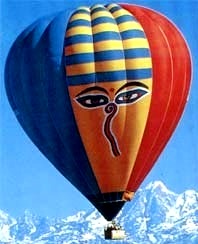 Hot Air Ballooning: The adventure of hot air ballooning is now available in Kathmandu Balloon flights usually begin shortly after dawn when winds are mild. The balloon will float about 1200 to 1500 m above the valley. From this altitude the entire Himalayan range will be in sight along with fantastic downward views of Kathmandu valley. Hot Air Ballooning: The adventure of hot air ballooning is now available in Kathmandu Balloon flights usually begin shortly after dawn when winds are mild. The balloon will float about 1200 to 1500 m above the valley. From this altitude the entire Himalayan range will be in sight along with fantastic downward views of Kathmandu valley. |
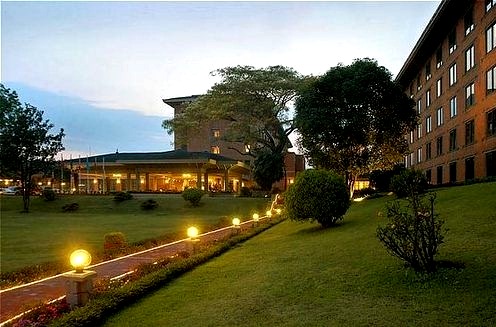 Convention Tourism: Congenial weather condition and various amenities including international convention centre and world-class hotels make Kathmandu potentially a very ideal destination in South Asia for organising international conferences. The instant satellite communications, increased airlines operation, efficient services at comparatively low prices, and the wider use of English among the hotel and supporting staffs are other added advantages Kathmandu offers to the business executives and regional and international organisations to hold meetings, seminars, and conferences in this picturesque capital city. Convention Tourism: Congenial weather condition and various amenities including international convention centre and world-class hotels make Kathmandu potentially a very ideal destination in South Asia for organising international conferences. The instant satellite communications, increased airlines operation, efficient services at comparatively low prices, and the wider use of English among the hotel and supporting staffs are other added advantages Kathmandu offers to the business executives and regional and international organisations to hold meetings, seminars, and conferences in this picturesque capital city. |
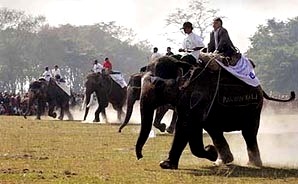 Sports Tourism: Nepal also offers great opportunity to the sports tourism. With the pleasant climate and the panoramic view of the snow-capped mountains and green hills, Nepal proves an ideal destination for sports such as golf and cricket. Sports Tourism: Nepal also offers great opportunity to the sports tourism. With the pleasant climate and the panoramic view of the snow-capped mountains and green hills, Nepal proves an ideal destination for sports such as golf and cricket. |
